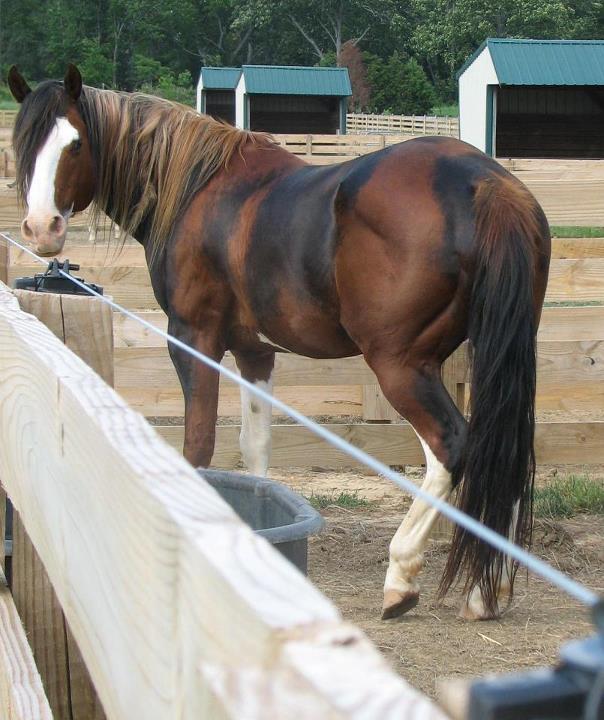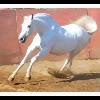mmm. and this one... not spanish of course..
Forums
I have a few questions about
I have a few questions about this fella.
Has he been tested that we know of? At first glance, I assumed he was chimeric, but something about the way it fades on his barrel, and up onto his withers, makes me wonder if it is sooty instead. Am I wrong in assuming that a chimera would have fairly well defined edges to the different coloured areas. Anyone care to clarify for me? :-?
http://www.allbreedpedigree.c
http://www.allbreedpedigree.com/stetson…
I'm pretty sure he was tested chimeric
Yup, Stetson's Mr Blue the
Yup, Stetson's Mr Blue the chimera. I love that he is flaxen chestnut and black, some images of his mane are really pretty. Need to find it and post.
I also would love to see the owners test both sets of his DNA for Splash. Just to see since chimerisma doesn't visually affect white pattern formation.
The sad thing? Chimeras are
The sad thing? Chimeras are easier to understand than LP as far as I'm concerned. :P
A testable condition of 2 sets of DNA in 1 animal...
...versus...
Several genes working together, hormomal color changes, suppression and extension based on gender and base color, multiple nonisolated modifier quirks, base color shift, nightblindness, sabino and roan causing false fewpots, late bloomers, euvitis, genetic leopards that resemble blankets, gray leopards getting cat tracks instead of spots... And you only have a test for 1 one of many interacting genes.
The madness! :rofl
^ What Monsterpony said.
^ What Monsterpony said.
Some late bloomer mares, who look like solid non LP horses, have been known to finally start varnishing once they are in foal due to an increase in testosterone that occurs in the body chemistry of a pregnant mare.
The increase in male hormones facilitate the pattern expression change. LP is the only pattern that can visibly show hormonal fluctuations and changes in the pattern expression while the horse is alive. Some stallions who get gelded will reverse varnish since they have less testosterone causing white in their pattern.




I wish that was genetic so
I wish that was genetic so bad.